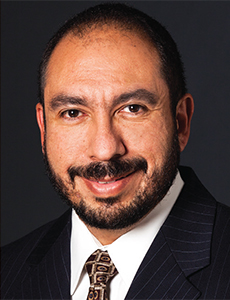Successor Liability
Hidden Harm

On Nov. 30, 2000, the Fluor Corp. did a reverse-spinoff and split into two separate publicly traded companies.
The restructuring created a new subsidiary — retaining the Fluor Corp. name — that acquired all engineering, procurement and construction operations from the namesake company.
A.T. Massey Coal Co., which had been acquired by Fluor in the 1980s, was renamed Massey Energy Co. and retained the A.T. Massey coal mining and related operations.
The Hartford, which had issued Fluor comprehensive general liability policies beginning in 1971, continued to defend and indemnify Fluor for asbestos-related claims. That is, until 2009, when in a legal dispute over a case with Fluor, The Hartford argued that the original Fluor Corp. never assigned its insurance coverage to the newly formed company.
Therefore, the insurer argued, it had no obligation to defend or indemnify Fluor for any claims preceding the restructuring.
That is the challenge successor companies are saddled with when they seek insurance coverage for liabilities — some of which can come as a total surprise — that were incurred by a predecessor company.
“Who is liable, the seller or the buyer? And who gets insurance benefits? Often in these scenarios, the buyer has assumed some liability and is claiming insurance benefits under the seller’s policies. In response, the insurer raises the boilerplate anti-assignment provision as a bar to transferability [of the benefits],” said Damian Arguello, partner, Davis Graham & Stubbs LLP in Denver.
Claims that follow a merger, acquisition or restructuring can be wide-ranging. Environmental issues, product liability, shareholder suits, intellectual property, or violations of federal law such as the Foreign Corrupt Practices Act or the False Claims Act, among others, are all potential vulnerabilities to the buyer.
When claims that occurred before the M&A are made to the buyer — known as successor liability — it can be difficult to get insurers to indemnify or defend them. That is especially true when the successor company attempts to use insurance policies previously purchased by the seller.
The possible indemnification of claims that arise years prior to an M&A but are only asserted afterward is one reason “insurance archaeologists” offer their services to reconstruct old insurance policies to help determine whether coverage is available to the successor company.
The type of insurance that may respond varies, based on the claim as well as on whether a policy provides claims-made or occurrence coverage; the difference being that in most cases, for a claims-made policy to be triggered, the claim must be made during the policy period for an event that occurred during the policy period, while an occurrence policy will respond to an event during the policy period regardless of when the claim occurred.
So, say Company A buys Company B in 2015, and the next year finds out that a product of Company B’s, made in 2010, caused bodily injury. If Company A is sued, it may try to use the liability policy, which offered occurrence coverage, purchased by Company B in 2010 to defend and indemnify the claim.
The possible indemnification of claims that arise years prior to an M&A but are only asserted afterward is one reason “insurance archaeologists” offer their services to reconstruct old insurance policies to help determine whether coverage is available to the successor company.
“Those old policies can be worth millions,” Arguello said.
M&As on the Rise
As the number of mergers and acquisitions continue to rise, it follows that successor liability vulnerabilities increase.
Worldwide M&As totaled $2.2 trillion in the first half of 2015, an increase of 40 percent over the same period a year ago, according to Thomson Reuters. In the United States, the increase was even higher — 47 percent — for a total of $1.3 trillion.
In the U.S. market, the health care sector ranked first, with deal volume totaling $254 billion, or one-quarter of all U.S. M&As. Energy and power was second, with technology rounding out the top three sectors, according to Thomson Reuters.
Successor liability “is an area that the carriers really focus on because they don’t want to get bitten any more than the buyer of the company does. They are always trying to write policies to protect themselves from that big claim,” said Steve Taylor, a partner and head of the insurance practice at Bass, Berry & Sims PLC in Nashville.
In the Fluor case, the California Supreme Court reversed its own controversial 2003 decision in the Henkel case, which had dramatically limited the ability of corporate successors to tap into a predecessor company’s insurance coverage.
Its new ruling on Aug. 20 cited a previously unconsidered state insurance code dating to 1872. It ruled The Hartford could not refuse to honor the claim from Fluor. However, the Fluor court also discussed at length the public policy reasons to allow post-loss insurance benefit transfers in such corporate transactions.
“It really amounted to their recognition that the prior decision was incorrect,” said Arguello, who noted that there has been “a budding trend” in other state and federal courts citing Henkel in rejecting the assignability of predecessor company insurance policy benefits.
“I’m sure the battle will continue between policyholders and insurers on the assignability of post-loss policy benefits,” he said.
“[Insurers] have some understandable concerns when decades later some new company comes along and claims benefits under their policy, counter-balanced by corporations’ expectations that coverage for claims arising out of prior operations doesn’t just evaporate when the business is sold.”
Costly Investigations
With the health care sector topping the M&A chart, one particular concern for those organizations — and others — is the increased federal enforcement of the False Claims Act (FCA).
“The health care industry is where the overwhelming majority of enforcement activity [related to the FCA] occurs,” said Matt Curley, a partner at Bass, Berry & Sims and a former assistant U.S. attorney. “Any time a business is dealing with the government, submitting claims for payment to the government, they run the risk of potential False Claims Act violations.
“It’s only natural to anticipate that companies active in acquisitions will deal with the possibility of enforcement issues post-close; it is often the case that an acquired company will have a regulatory issue that does not emerge in due diligence and only comes to light after the deal closes,” he said.
One of the major financial challenges for companies when the federal government launches an investigation is that most insurance companies do not offer coverage for costs incurred by the insured entity until an actual lawsuit against both the entity and a named insured person or a demand for damages is made.
The investigation could relate to employment practices, fiduciary liability or a variety of other potential violations. The Foreign Corrupt Practices Act (FCPA), in particular, is a potentially violent storm cloud, and as with other federal investigations, insurance doesn’t really hoist its umbrella until a huge financial outlay is made.
“D&O policies wouldn’t typically cover an FCPA investigation against the entity,” said Tony Galban, senior vice president and underwriting manager, directors and officers liability insurance, Chubb Group of Insurance Cos.
“Companies can spend tens of millions of dollars being investigated around the world for a potential violation of the Foreign Corrupt Practices Act, and there’s no promise that the D&O policy will be responsive at that stage,” he said. “FCPA really falls into the bucket of an investigation. D&O policies typically respond once the investigation has evolved into a lawsuit.”
“FCPA really falls into the bucket of an investigation. D&O policies typically respond once the investigation has evolved into a lawsuit.” — Tony Galban, senior vice president and underwriting manager, directors and officers liability insurance, Chubb Group of Insurance Cos.
Taylor noted that brokers may be able to “carve back from that broad exclusion” so that defense costs could be covered until a final adjudication.
Curley also suggested that risk managers check “all possible areas of coverage they might have. They might be pleasantly surprised to find they have coverage for some portion of the costs associated with an investigation or with the claims underlying the conduct at issue.”
The U.S. Department of Justice and U.S. Securities and Exchange Commission brought a total of 10 FCPA cases in 2014, half the number brought in 2010, according to a study by Shearman and Sterling LLP.
But those cases — involving such high profile companies as Alcoa, Avon, Hewlett-Packard and Smith & Wesson — resulted in corporate penalties of nearly $1.6 billion, or an average of about $157 million per company, the study reported.
D&O Run-Off Protection
And increased enforcement is anticipated, with SEC officials saying the organization is investing in the FCPA program and is working with other regulators, both inside and outside the U.S., to seek out violators.
“All companies run the risk of having to deal with government enforcement efforts,” said Curley of Bass, Berry & Sims. “The risk is heightened for companies that are active in acquiring other companies because they have to deal with the possibility of legacy compliance issues.”
While selling companies can purchase run-off D&O protection, usually for a six-year duration, to cover against claims arising from wrongful acts that took place before the acquisition, fines and penalties for wrongful conduct are typically excluded from coverage.
Run-off policies “are generally popular because they create a buffer arising out of acts [the acquiring company] couldn’t see from the company they acquired,” Galban said, noting that D&O insurance is a claims-made policy.
Buyers also can purchase a tail policy on the seller’s D&O coverage to provide them with an extended period of time with which to file a claim, Taylor said.
The run-off protection generally covers directors and officers for shareholder litigation, which affects “the vast majority of companies” that announce they are being acquired, said Galban.
Typically, merger objection suits are filed prior to the merger and are brought against the potentially acquired company.
In addition, post-merger integration problems can motivate the buyer to allege that the seller made misrepresentations in the purchase agreement.
Although representations and warranties policies are designed to cover these claims, in many instances claims are also made against the D&O run-off policy. However, D&O underwriters are not underwriting or pricing for these risks, Galban said.
D&O, like representations and warranty coverage, can be expensive.
Reps and warranty policies provide coverage for misrepresentations in an acquisition purchase agreement, Galban said. The policies can be purchased by the buyer (buy-side) or by the seller (sell-side).
“Where people are worried about true successor liability is where they get hit for a liability they did not intend to take,” said Craig Schioppo, transactional risk practice leader, Marsh.
But, even when an acquiring company specifically excludes a particular liability that occurred prior to the acquisition, it may later face a court that decides it is responsible anyway, he said.
The same is true for the government. “If the government thinks there is wrongdoing, they will look to the acquiring company as well as the seller,” Curley said. “They will not limit their efforts at recovery to just the seller.”
Effective Due Diligence
Having risk managers and experienced insurance coverage counsel involved in M&A transactions may help forestall insurance recovery problems related to successor liability.
“Some companies are really good [at] involving risk managers and insurance lawyers in business decisions and some are not,” said Arguello of Davis Graham & Stubbs. “Some just treat risk managers as an insurance purchasing department, but they need to have a voice in the conversation.”
“By and large, I think if you are dealing with something that could have a long-tail claim associated with it, you need to do a much deeper dive on the insurance side.” — Damian Arguello, partner, Davis Graham & Stubbs LLP
A thorough transactional due diligence process should include all facets of the selling company — including its legal, operational, environmental, intellectual property, tax, insurance and financial history.
The due diligence, Arguello said, “needs to be really broad, not just on the insurance side but to understand what the other party has done, its history and operations to better predict the source of post-transaction claims.”
Risk managers should ensure that any insurance policy benefits held by the seller that are related to known or possible liabilities are assigned to the acquiring company or name the buyer as an additional insured, he said.
Many M&A agreements only focus on the current year insurance policies instead of delving into past contracts that actually pertain to the liabilities being transferred.
Too many M&A practitioners do a “very superficial due diligence on insurance policies,” Arguello said.
“By and large, I think if you are dealing with something that could have a long-tail claim associated with it, you need to do a much deeper dive on the insurance side,” he said.
Galban noted that acquiring companies can structure the purchases in different ways when there is a concern about legacy liabilities — such as acquiring only the assets of the seller instead of the assets and liabilities.
“If you are acquiring a global company, I would say that getting into the corrupt practices issue is a huge priority — the internal controls, the policies and procedures, the auditing.
“All of the things you do in other countries to make sure you are compliant with bribery laws as an acquiring company has to be on the short list of priorities,” he said.
“The severity of being wrong is pretty high.”
From a risk management perspective, Curley said, it’s crucial to have a strong compliance program, and to make sure there is a process and procedure in place to investigate and take immediate remedial action, if necessary, to address violations.
“Companies need to understand that even in the best compliance programs, there is a risk of encountering government enforcement activity,” he said.
“I think that’s particularly true with companies active in acquiring new companies because that includes the possibility of dealing with legacy issues which the company’s compliance program obviously would not have been able to address.”














